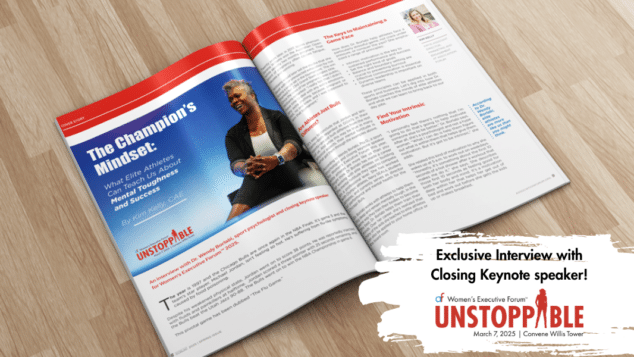What Associations Should Know — and Do — About the Great Resignation

The pandemic caused millions of people to rethink their relationship with work. For many, the result has been to leave their jobs.
Dubbed the Great Resignation, millions of people have quit their jobs since the start of the pandemic. A record-setting 4.4 million people quit in September alone. The reasons why are complex. Some people have left for better benefits and higher salaries while others sought a career change, more job flexibility or more job security. Childcare struggles and health concerns have also contributed.
These factors aren’t new, but the pandemic certainly accelerated them. In the past 20 months, many employees have “gained new skills and found better opportunities outside of the industry or the role they left,” says Tina Marie Wohlfield, founder and chief people strategist for HR consulting and management company, TIMAWO, in Fraser, Michigan.
“This is the first time in my HR career where there are more job openings than available candidates to fill them,” Wohlfield says.
At the moment, there’s no sign that the quitting frenzy will dramatically slow down. A third-quarter Joblist survey found that nearly 3 in 4 workers are actively thinking about leaving their jobs. The challenge of attracting and retaining talent will likely last at least through 2023, Wohlfield says.
“But that doesn’t mean this is an indefinite period, and I believe this is a great opportunity to respond and reset how we approach and retain talent,” she adds.
Some organizations are wooing workers with offers of more money, better benefits and promises of 100% remote work. But other methods can give your association a leg up on attracting and keeping staff, too.
Freshen up recruiting and onboarding
If it’s been a while since you reworked your hiring and onboarding processes, now is a great time to make some tweaks. Not only are both critical to attracting and retaining top employees, but the pandemic has changed employment in ways that necessitate a refresh.
For starters, consider what makes working at your association great. If you have the budget for super-sized benefits, awesome — play that up. But lower-cost perks are exciting right now, too, such as unlimited vacation plans, flexible work schedules or access to education and training opportunities.
“One new tool I have been recommending and incorporating in this tight labor market is the use of video to better highlight why someone would want to work at your association,” Wohlfield says. “Use testimonials from employees, leaders and your members that focus on the implicit benefits of your association — the culture, atmosphere, career development.”
The mission of your association can be a powerful recruiting tool as well. Nearly two-thirds of U.S. employees say that COVID-19 has caused them to reflect on their purpose in life, McKinsey research found, and for almost half of them that means the kind of work they do. With so many associations being purpose-driven, now is the time to highlight that potential for doing good and making a difference in the world.
It’s also a time to think about whether your hiring needs have changed, says Cynthia Orme, a senior consultant at Nonprofit HR in Philadelphia.
“If your members are experiencing stress or new opportunities, then your employees will need the skills to meet them where they are,” she says. For example, the employees of a nursing association may need better agility in crisis management than in the past, Orme explains.
Offer flexibility
The shift to more remote work opened many people’s eyes to what life could look like if they weren’t spending most of their day in an office. For many, the lack of a commute and more time for their personal lives isn’t something they want to give up. Of the roughly 50% of employed Americans who plan to make a career change because of the pandemic, 41% are looking for flexible and/or remote work, according to a Harris Poll.
Not surprisingly, parents are especially interested in workplace flexibility, but so are younger employees of all stripes. A flexible work arrangement was the top priority for Gen Z (62%) and Millennial (60%) workers in a Bankrate job-seeker survey.
While 100% remote work might not be on the table for your association — which is fine — neither should a totally rigid work schedule. And if you’re calling back employees into the office, be prepared to explain why.
“You need to have a good answer as to why that is a business necessity. If the answer isn’t good, you’re very likely to lose an employee,” Rafael Rivera, CEO of the Professionals in Human Resources Association, told Associations Now.
With workplace flexibility, figure out what is suitable for you and your employees and be clear and consistent about your policies, Orme says. Maybe that means mostly remote work, a hybrid schedule, a shorter workweek or a more fluid workday where employees can start or end their day at different times as long as they share certain core work hours.
Upskill your current employees
The solution to your work needs could be looking right at you — your current employees. In a tight hiring market, upskilling your employees can help you meet your association’s needs and convince a valued employee to stick around, Wohlfield says.
Learning and evolving at work is key for employees, especially now. In a survey with Amazon, Gallup found that 57% of workers want to update their skills and 48% would consider switching jobs to do it.
The focus should be on how you can help your employees’ training and career development. Wohlfield recommends that managers and leaders ask themselves these questions:
- What can you as leaders do to support your employees in their current role?
- How can you help them achieve their professional goals?
If you’re expecting an employee to take on more work or more challenging work, be sure to connect that to financial benefits, Orme says.
Boost your culture
It’s true that higher pay and more flexibility are drivers for the Great Resignation, but poor company culture tops the list, too. Company culture isn’t really about free lunches, Friday social hours or onsite gyms. It’s about an “environment of trust, accountability, commitment, inclusive leadership, and a structure that isn’t too heavy,” Orme says.
Fostering a better workplace comes down to doing a few basic things well, Orme says, including:
- Regularly asking your employees’ questions and listening to the answers
- Having timely and transparent communication
- Acknowledging people’s emotions and efforts
- Doing what you say you’re going to do
Good managers also can make all the difference. In fact, when people who recently quit their jobs were asked why they left, 54% they said they didn’t feel valued by their organizations, 52% said they didn’t feel valued by their managers and 51% said they lacked a feeling of belonging at work, according to a 2021 Gallup poll. Non-white or multiracial employees were especially likely to feel like they didn’t belong.
Building a more welcoming, supportive and authentic culture at your association takes time, but small changes can happen quickly, Orme says. A good start is to regularly poll your staff.
“Surveys can be very good if well-designed. For example, don’t ask employees if they’re happy — ask to what extent they can trust their manager,” Orme says. “It’s key to repeat surveys to keep your finger on the pulse as things evolve and as you introduce change.”
One easy measurement of the success of your organization’s culture, Wohlfield says, is the level of dialogue from employees at all levels of the organization.
“As an HR professional, I get very concerned when employees stop sharing feedback and become silent,” she says.
Tags
Related Articles
Refill Your Cup: Summer Wellness Tips for Busy Professionals
Discover simple, effective ways to recharge this summer so you can show up as your...
The Champion’s Mindset: What Elite Athletes Can Teach Us About Mental Toughness and Success
An interview with Dr. Wendy Borlabi, sport psychologist and closing keynote speaker for Women’s Executive...
Great Bosses, Greater Impact: Leadership Lessons that Stick
The best bosses leave more than instructions—they leave echoes of confidence, creativity, and leadership that...




